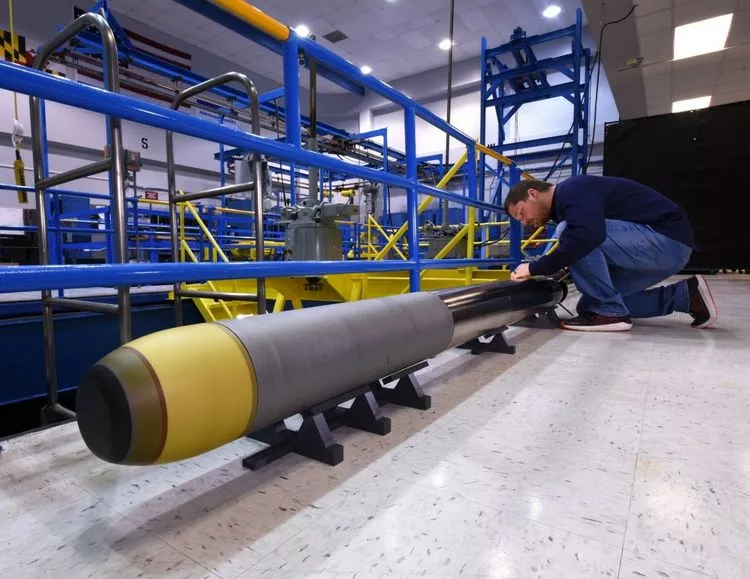Northrop Grumman has completed testing of the US Navy's new Very Lightweight Torpedo (VLWT). The first industry-built prototype is based on a previous version developed by the Pennsylvania State University Applied Research Laboratory (PSU-ARL) that was released to manufacturers in 2016 as part of the Navy's Compact Rapid Attack Weapon program.
The VLWT is the latest in a series of lightweight torpedoes being developed for the US Navy and overseas customers to deal with the problems of anti-submarine warfare in littoral areas. Its purpose is essentially that of the Navy's Mark 54 Lightweight Torpedo, which is designed to be launched from surface ships, aircraft, or submarines.
Though the specifications of the VLWT have not been released, it's powered by a monopropellant Stored Chemical Energy Propulsion System (SCEPS) built by Denver-based Barber-Nichols, and guided to the target by an active/passive acoustic homing system. According to Northrop Grumman, the company's goal was to make design-for-affordability improvements on the PSU-ARL prototype, swapping out expensive components with more economical ones and improving the torpedo's affordability, reproducibility, and reliability.
"The successful testing of the torpedo nose on the first try is a testament to Northrop Grumman’s design-for-affordability approach, which will significantly reduce cost without sacrificing operational performance," says David Portner, lead torpedo program manager, undersea systems, Northrop Grumman.
Source: Northrop Grumman





